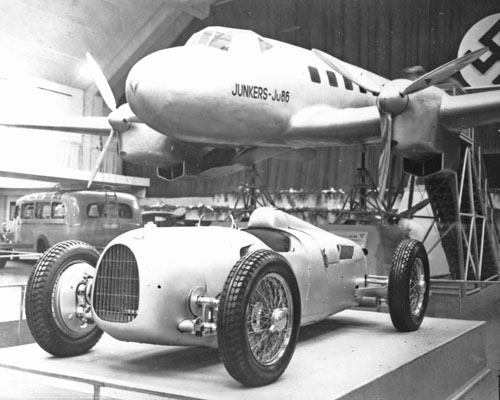
A 1936 Auto Union Type C sits below a similarly streamlined Junkers JU-86 at an exposition
As we saw in the last few installments, Daimler-Benz and Auto Union had heavily engaged in racing – a massive investment for both, pushing the boundaries of existing technology and redefining how motor racing was to be undertaken. The question in today’s installment was who this methodical approach to racing benefited the most. Was the government’s investment in racing worthwhile? Was Auto Union’s gamble on building an unconventional race car a success? Were the extremes to which Daimler-Benz was willing to stretch its racing budget realized in results over the competition? Today we look at some of the more pragmatic reasons behind the motivations of both companies and some of the ideology behind government which helps explain the involvement of both.
Link To Part 4
FIVE: FOR COMPANIES, GOVERNMENT, COUNTRY?
